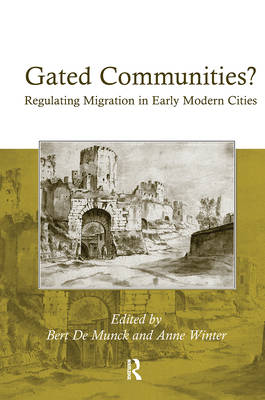
- Retrait gratuit dans votre magasin Club
- 7.000.000 titres dans notre catalogue
- Payer en toute sécurité
- Toujours un magasin près de chez vous
- Retrait gratuit dans votre magasin Club
- 7.000.000 titres dans notre catalogue
- Payer en toute sécurité
- Toujours un magasin près de chez vous
305,45 €
+ 610 points
Format
Description
Contrary to earlier views of preindustrial Europe as an essentially sedentary society, research over the past decades has amply demonstrated that migration was a pervasive characteristic of early modern Europe. In this volume, the theme of urban migration is explored through a series of historical contexts, journeying from sixteenth-century Antwerp, Ulm, Lille and Valenciennes, through seventeenth-century Berlin, Milan and Rome, to eighteenth-century Strasbourg, Trieste, Paris and London. Each chapter demonstrates how the presence of diverse and often temporary groups of migrants was a core feature of everyday urban life, which left important marks on the demographic, economic, social, political, and cultural characteristics of individual cities. The collection focuses on the interventions by urban authorities and institutions in a wide-ranging set of domains, as they sought to stimulate, channel and control the newcomers' movements and activities within the cities and across the cities' borders. While striving for a broad geographical and chronological coverage in a comparative perspective, the volume aims to enhance our insight into the different factors that shaped urban migration policies in different European settings west of the Elbe. By laying bare the complex interactions of actors, interests, conflicts, and negotiations involved in the regulation of migration, the case studies shed light on the interrelations between burghership, guilds, relief arrangements, and police in the incorporation of newcomers and in shaping the shifting boundaries between wanted and unwanted migrants. By relating to a common analytical framework, presented in the introductory chapter, they engage in a comparative discussion that allows for the formulation of general insights and the identification of long term transformations that transcend the time and place specificities of the case studies in question. The introduction and final chapters connect insights derived from the individual case-study chapters to present wide ranging conclusions that resonate with both historical and present-day debates on migration.
Spécifications
Parties prenantes
- Auteur(s) :
- Editeur:
Contenu
- Nombre de pages :
- 308
- Langue:
- Anglais
Caractéristiques
- EAN:
- 9781409431299
- Date de parution :
- 28-02-12
- Format:
- Livre relié
- Format numérique:
- Genaaid
- Dimensions :
- 156 mm x 234 mm
- Poids :
- 612 g







